Nov 15, 2023
Filling the Gaps: Program Builds Referral and Recovery Services in Western Massachusetts
 "We're only as sick as
our secrets" is a frequently paraphrased adage noted in
substance use recovery conversations and literature.
"We're only as sick as
our secrets" is a frequently paraphrased adage noted in
substance use recovery conversations and literature.
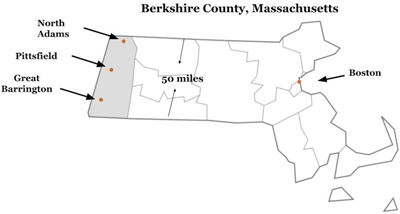 Gary Pratt is
director of Rural Recovery
Resources, an organization newly created from 2020
RCORP (Rural
Communities Opioid Response Program) implementation
funding awarded by the Federal
Office of Rural Health Policy (FORHP).
With his organization located in the town of Great
Barrington,
Berkshire County, Massachusetts's westernmost rural
county, Pratt is a person living in recovery since 2008.
He said he strongly believes that education around this
adage describing substance use stigma has been core to
the work made possible by their coalition's grant
funding.
Gary Pratt is
director of Rural Recovery
Resources, an organization newly created from 2020
RCORP (Rural
Communities Opioid Response Program) implementation
funding awarded by the Federal
Office of Rural Health Policy (FORHP).
With his organization located in the town of Great
Barrington,
Berkshire County, Massachusetts's westernmost rural
county, Pratt is a person living in recovery since 2008.
He said he strongly believes that education around this
adage describing substance use stigma has been core to
the work made possible by their coalition's grant
funding.
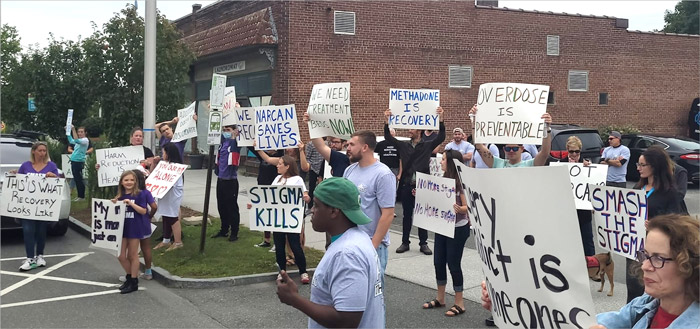
"When a community says, 'There's no drug problem or homelessness around here because we don't see drug deals on the corner of Main and Railroad Street in Great Barrington. We don't have people sleeping in alleyways,' people just assume these problems are nonexistent," Pratt said. "But they are there. I'm going to borrow a phrase from Narcotics Anonymous: Secrets grow in the dark. There's got to be someone raising awareness that the problem exists. It's the way we've moved forward: Getting our county's substance use issues out of the dark and shining light on them. And it's one way we're stopping the problem from growing. Addressing stigma has got to be at the forefront of any substance use effort."
More On RCORP Grants
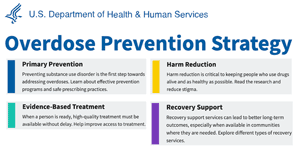
The Rural Communities Opioid Response Program (RCORP) is a multi-year initiative aimed at reducing the morbidity and mortality of substance use disorder, including opioid use disorder. RCORP implementation grants are geared to strengthening and expanding prevention, treatment, and recovery services by leveraging evidence-based interventions and promising practices. These efforts align with the U.S. Department of Health & Human Service's overdose prevention strategy.
Pratt said he hopes that Great Barrington's pre- and post-grant award story motivates other rural organizations to apply for funding. Telling some of that pre-grant story is Railroad Street Youth Project's (RSYP) executive director, Ananda Timpane. She started with RSYP's origin story.
"In the late 1990s, in a period of around 18 months, there were uncounted near miss deaths from substance use, about 15 deaths directly related to use, and four teens who died in an auto accident related to alcohol," she said. "Local teens were stressed by attending so many funerals. Back then, we didn't really recognize that what we were experiencing was likely the first wave of the opioid epidemic."
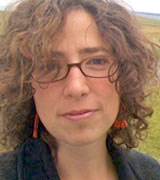
Timpane further explained that those fatality numbers triggered community action, starting with a new task force. Adult leaders and organizers were joined by a teenager who asked, "Why don't you ask us what's needed?"
Timpane shared the community's response to the teenager's rhetorical question.
"Motivated by that question, adults did ask," Timpane said. "The answer from our youth was that, number one, they needed to feel valued by their community and, two, they said they needed things to do that were the things they wanted to do and that they created for themselves to do in this rural area. Years later, and now standing with one foot in the public health space, I recognize that what those teens suggested was what today's research proves: Youth need pro-social activities and to be rewarded at the community level for their pro-social involvement. Railroad Street Youth Project was the result of that early youth involvement and remains a youth-led organization today still involved with substance use."
Prior to the grant application, RSYP led a successful substance use program through the South Berkshire Community Health Coalition (SBCHC). Some of the SBCHC's work focused on community education.
SBCHC's "Talking with Teens"
A popular project was SBCHC's "Talking with Teens" video series, a project with the community's teens and parents as actors, including videos in Spanish:
Timpane shared that another SBCHC project, "Kitchen Table Talks," came to completion when RCORP funding was leveraged to complete the manual for the project's facilitation training.
"Early on, we worked on really concrete things," she said. "We knew healthcare providers might want different patient information than what was available in pages and pages of difficult-to-understand handouts. To that end, we created a bifold brochure with talking points like why the opioid was needed, that it could be addictive, how long it might be needed, and where any remaining pills could be disposed."
Timpane further explained that RSYP and SBCHC's substance use work was ongoing, but coalition members wanted to do more. In her leadership role, she said she found herself facilitating activities and leading meetings when data collection efforts around existing community efforts showed positive results that seemed to align with RCORP grant eligibility.
Enter Pratt and his eventual involvement with the grant award.
Timpane said she was already aware of Pratt's successful anti-stigma activities, Smash the Stigma 413, since Pratt had been approved by the youth board to host events like naloxone training at RSYP's location in Great Barrington. When his voice showed up on a community social media platform that was advocating to save a local corner's tree stating that he'd like to see the same energy put to doing something about the community's substance use issues, Pratt was invited to the meetings geared to application for RCORP funding. With RSYP as the lead, the southern Berkshire County 13-member coalition later learned they were a 2020 RCORP Implementation grant awardee.
Something Where Nothing Was Before: Building Rural Recovery Services
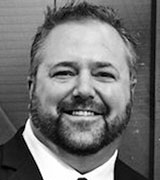
To date, accomplishments supported by the RCORP implementation grant funding are many, but Pratt and Timpane said probably the most impact will come from creating Rural Recovery Resources, which opened in early 2021. Despite the completion barriers associated with the COVID-19 public health emergency, the organization was built from scratch with Pratt leading as a project manager.
Pratt said his broad variety of employment experiences, including peer support and a license as an alcohol and drug counselor, made him passionate about recovery services. He said these lived personal and work experiences allowed him an understanding of those who might be misusing substances. However, it also made him acutely aware of resource and service gaps in the southern part of Berkshire County. Although some recovery services were available in other parts of the county and the state, the county's mountainous geography and lack of public transportation made local services around Great Barrington a must.
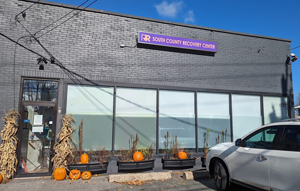
"In our grant application, there was one sentence about the recovery center," he said. "It read, 'Open a safe space for people affected by opioid use disorder/substance use disorder.' We all knew that meant opening a recovery center, but we had no clue how to do that. Then came the grant funds. With determination, time, and a lot of effort and a lot of collaboration, we now have the South County Recovery Center, which houses Rural Recovery Resources."
The Build: Leaning on a State Resource
Pratt pointed to one resource he said was invaluable in creating the recovery center: From The Ground Up: How to Build Your Own Peer-to-Peer Recovery Center [no longer available online], published by the state-funded The RECOVER Project. From meetings geared to creating the space, arranging contractors, and completing a building renovation, Pratt said he's as proud as he is amazed at the fact that not only does Rural Recovery Resources exist, it now has some type of programming for Great Barrington seven days a week.
What are recovery services? Following the Massachusetts Bureau of Substance Addiction Services continuum of care model that includes prevention, intervention, treatment, and recovery support services, his organization offers recovery coaching, warm handoffs to the many other organizations that are part of recovery, harm reduction education with naloxone training, and other services.
Rural Recovery Resources "Find Help" Tool
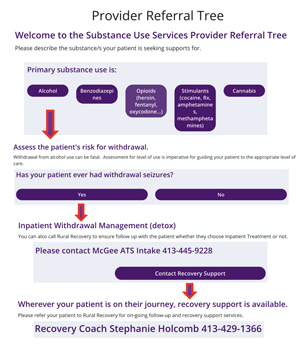
Starting a recovery center in itself was a big win for the community, but Pratt pointed to another from-scratch build he believes might be less obvious yet also has high impact: the Rural Recovery Resources "referral tree" found under their website's Find Help tab. This offers a decision-tree function that would be similar to an interaction with an intake coordinator. Responses to screening questions take the user directly to the needed service name, location, and contact information.
"We know healthcare provider screening for substance use isn't happening nearly as often as it should be," Pratt said, crediting two of his colleagues for suggesting the tool. "Research shows that one reason that's fact is because they didn't know where to refer patients with positive results. That made us originally consider healthcare providers as the sole user of the tool. We wanted them to be able to come to our services, start their patients with us so they'd have peer support and a recovery coach with them along their recovery path. Yet, they'd also immediately have the information for other organizations that could meet their patients' needs."
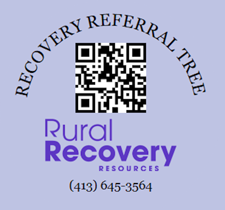 However, Pratt said
once the prototype was developed, involved coalition
members realized that as valuable as the tool was for
healthcare providers, it had equal value for the lay
public. With that came a goal of a wider reach. A third
colleague suggested community-wide distribution of
stickers with a QR code that could be put on laptops,
provided to first responders, and placed in police cars
and in fire trucks, allowing anyone who came to that
decision tree immediate access to appropriate services.
Pratt said that with this community outreach another of
their grant goals, expansion, was met: increased
screening and referral to appropriate services.
However, Pratt said
once the prototype was developed, involved coalition
members realized that as valuable as the tool was for
healthcare providers, it had equal value for the lay
public. With that came a goal of a wider reach. A third
colleague suggested community-wide distribution of
stickers with a QR code that could be put on laptops,
provided to first responders, and placed in police cars
and in fire trucks, allowing anyone who came to that
decision tree immediate access to appropriate services.
Pratt said that with this community outreach another of
their grant goals, expansion, was met: increased
screening and referral to appropriate services.
Pratt admits that, yes, the tool happens to be easy to use, affordable, and easy to update, but it is also flexible to meet other social determinant of health needs. He said it's gratifying to know that from their grant work, the tool's effectiveness has gained attention and will be leveraged by other community organizations.
"There's another organization here in south Berkshire County that's planning to adapt it on a wider level," he said, again crediting his colleagues for the heavy lifting they did to make the tool functional for Rural Recovery Resources' needs. "We're going to focus on substance use, but they're planning to use it for housing and other resource needs. It's a pretty fantastic tool."
More About Recovery Services: Meeting People Where They Are
For those with substance use disorder, recovery coaches (RC) and peer support specialists (PSS) are professionals who stand beside someone — literally and figuratively — as they make the journey to recovery. Considered one of the six pillars of harm reduction [report no longer available online], the RC and PSS will "meet people where they're at," a phrase that refers to the respect one person gives for another's autonomy, self-determination, and decision-making. Because recovery services can refer to a wide variety of services, Pratt shared more about his organization's recovery services, especially with regard to meeting people where they're at.
"When we say that we meet people where they're at, it's not just mentally and emotionally. It's physically as well," Pratt said. "We will literally travel to people — and we don't leave them there. That's the thing. We help them along their process in a no-judgment, no-pressure way, especially when they're still using substances. We honor people who use drugs because they're people first and foremost. Part of our work is helping these folks stay alive. If their goal is long-term abstinence, they're never gonna reach that if they're dead. How we go about meeting people where they're at is a kind of a paradigm shift, moving away from the traditional recovery path that is usually detox followed by attending 12-step meetings. Often, traditional recovery is almost the entire spectrum of treating substance use disorder in a low-resource area like rural Berkshire County. Rural Recovery Resources offers an alternative to that."
Building Leadership Capacity: Other Outcomes Tied to RCORP Funding
Linking the coalition's pride in the reality that is now the recovery center, Timpane said RCORP grant funding also created an environment that allowed for other less easily measured outcomes to emerge. One example is lessons learned by organizations like RSYP who might feel they're not quite a fit for health-focused grants. She mentioned an important — and replicable — lesson took root in RSYP's decision to flex around its mission and vision statements.
"During grant application discussions, at question was fiscal agent representation," she said. "Two likely organizations emerged: the local healthcare delivery system that was connected to a larger system and Railroad Street (RSYP). Our mission is clear: we work with 14- to 25-year-olds. We are not recovery-focused, nor do we have a medical focus. However, Railroad Street came out of the same local community dynamics that was behind recovery services: a really long history of showing up in an empowering way for [at-risk populations] and taking the risks to do what's needed to serve that population. We knew there was value alignment and nobody — nobody — in our organization was afraid of what a recovery center offered, despite the fact that we would not start from the same place a clinical organization might. Using that logic, we decided we'd serve as the fiscal agent. It's been a good decision and a decision that's allowed us to add partners we'd not previously fully engaged, like the local public health collaborative and organizations like the Brien Center, another local behavioral health and addiction services provider."
Pratt, too, agreed that he has personally benefited from leadership capacity building, a sort of unintended but extremely valuable grant outcome.
"One main goal of the RCORP grant was to create a recovery center and, ultimately, a recovery center that also acts as a referral hub," he said. "That means that type of organization needs someone to serve as a director. Ananda has mentored me in that role, especially around decision-making processes. For example, if I think something is important, she'll ask me why I think it's important, why I think it's a good thing for the community. Sometimes she'll suggest I rethink a position. Another time, she'll say, 'Awesome. Go for it.' Her mentoring has allowed me to become confident about our work. Having that confidence is behind taking the next steps for sustainability."
Next Steps: Because of RCORP Funding, Now Massachusetts State Funding
With Timpane's mentorship and the successes that the FORHP funding has brought to Great Barrington and south Berkshire County, Pratt said he had the confidence to work with other county organizations to successfully apply for the competitive, sustainable state recovery services funding through the Bureau of Substance Addiction Services, part of Massachusetts's involvement in universal healthcare and health reform structure.
"With our grant application, we had to make it clear that Great Barrington cannot serve the northern part of the Berkshire County around North Adams — just as North Adams can't serve Pittsfield, and Pittsfield cannot serve Great Barrington," Pratt said. "We have huge transportation issues in each of the three regions of Berkshire County and each needs their own recovery center. All three regions got funded. We now have funding for an initial four years followed by a recertification process every two years, with the entire contract for 10 years."
Pratt emphasized that these successes also gained additional support: for example, from local philanthropy. In the near future is a plan for 501(c)(3) status for Rural Recovery Resources and building their advisory board.
Our coalition's greatest accomplishment was to bring recognition to our rural area's service needs — and that recognition brought new services with data showing even more people are recovering every single day.
He added a final perspective.
"Our coalition's greatest accomplishment was to bring recognition to our rural area's service needs," Pratt said. "And that recognition brought new services with data showing even more people are recovering every single day."

